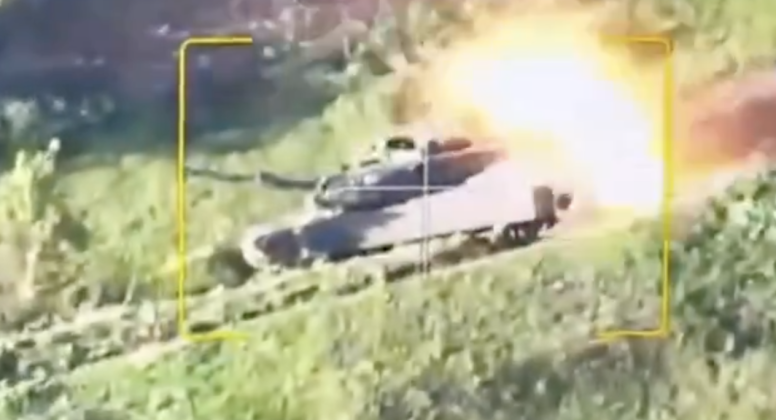News
New Munition Lets NATO Tanks Shoot Targets They Can’t See: Ukraine War Lessons Incorporated
European missile manufacturer MBDA has unveiled a new guided munition developed for the main guns of NATO-standard main battle tanks, the Akeron MBT 120, which introduces the capability to engage targets beyond line of sight. This capability was reportedly developed based on lessons from the Russian-Ukrainian War, where tank crews have been forced to improvise indirect fire with explosive shells. The tank round can be fired by all modern NATO main battle tanks, which use standard 120mm main guns, such as the German Leopard 2, American M1 Abrams, and the South Korean K2 fielded Poland and Turkey. The new round is highly compact, weighting only around 20 kilograms, and is fully compatible with existing racks and loading systems allowing it to be stored and handled in the same way as other 120mm ammunition.

Although the Soviet Union pioneered the use of tank-launched missiles during the Cold War, with such missiles widely used by Russian tanks, the Akeron MBT 120’s non-line-of-sight mode allows it to receive coordinates from drones and other forward deployed assets, rather than relying on laser guidance from the launching vehicle. The munition climbs to high altitude after launch, before striking targets from above. It low-acceleration rocket motor to reduce mechanical stress, limiting barrel wear and reducing the need for high stress resistance in its internal components. The munition’s development appears to respond to the poor survivability demonstrated by NATO’s two primary tanks, the Leopard 2 and M1 Abrams, when deployed by the Ukrainian Army against Russian forces. By January 2024 the majority of Ukrainian Leopard 2s had been rendered inoperable in combat with Russian forces, with over one quarter totally destroyed and the remainder damaged beyond the Army’s ability to repair them, while the Abrams proved similarly vulnerable, with the Ukrainian Army assessed in June 2025 to have lost 87 percent of the American sourced vehicles.












